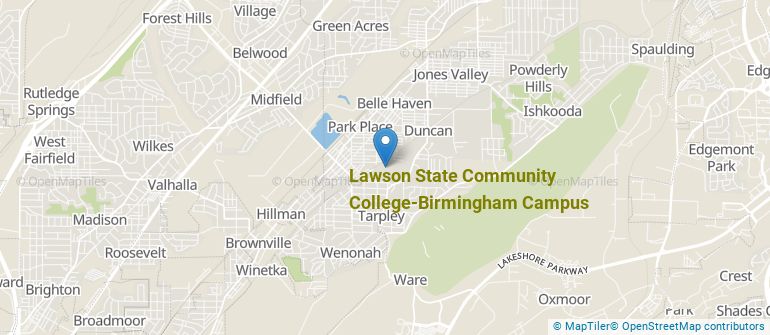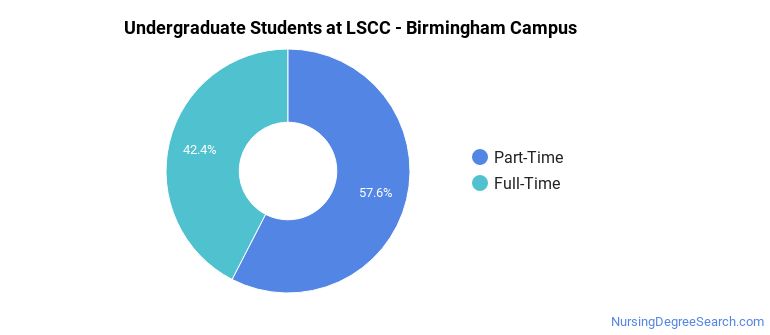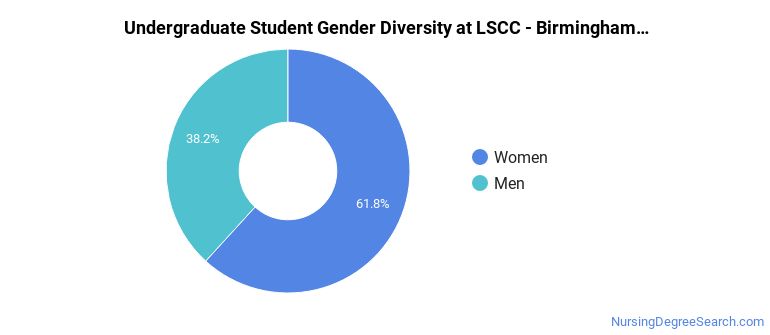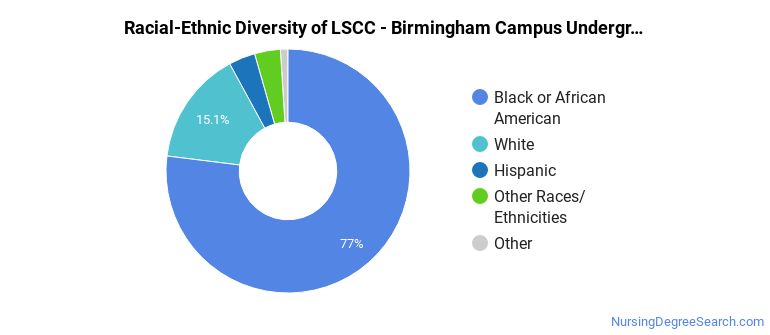Lawson State Community College - Birmingham Campus Nursing Programs
Located in Birmingham, Alabama, Lawson State Community College - Birmingham Campus is a public institution. The city atmosphere of Birmingham makes it a great place for students who enjoy having lots of educational and entertainment options.
Where Is Lawson State Community College - Birmingham Campus?

Contact details for LSCC - Birmingham Campus are given below.
| Contact Details | |
|---|---|
| Address: | 3060 Wilson Rd Sw, Birmingham, AL 35221-1717 |
| Phone: | 205-925-2515 |
| Website: | www.lawsonstate.edu |
How Do I Get Into LSCC - Birmingham Campus?
You can apply to LSCC - Birmingham Campus online at: www.lawsonstate.edu/admissions_records/admissions_information/admission_procedures_for_all_students.aspx
Can I Afford Lawson State Community College - Birmingham Campus?
Lawson State Community College - Birmingham Campus Undergraduate Student Diversity

Gender Diversity
Of the 1,198 full-time undergraduates at LSCC - Birmingham Campus, 38% are male and 62% are female.

Racial-Ethnic Diversity
The racial-ethnic breakdown of Lawson State Community College - Birmingham Campus students is as follows.

| Race/Ethnicity | Number of Grads |
|---|---|
| Asian | 4 |
| Black or African American | 922 |
| Hispanic or Latino | 42 |
| White | 181 |
| International Students | 8 |
| Other Races/Ethnicities | 41 |
Lawson State Community College - Birmingham Campus Nursing Concentrations
The table below shows the number of awards for each concentration.
| Major | Basic Certificate | Associate’s | Undergraduate Certificate | TOTAL |
|---|---|---|---|---|
| Registered Nursing | 0 | 36 | 0 | 36 |
| Licensed Practical/Vocational Nurse Training | 0 | 0 | 14 | 14 |
| Nursing Assistant/Aide and Patient Care Assistant/Aide | 6 | 0 | 0 | 6 |
| TOTAL | 6 | 36 | 14 | 56 |
References
*The racial-ethnic minorities count is calculated by taking the total number of students and subtracting white students, international students, and students whose race/ethnicity was unknown. This number is then divided by the total number of students at the school to obtain the racial-ethnic minorities percentage.
More about our data sources and methodologies.
